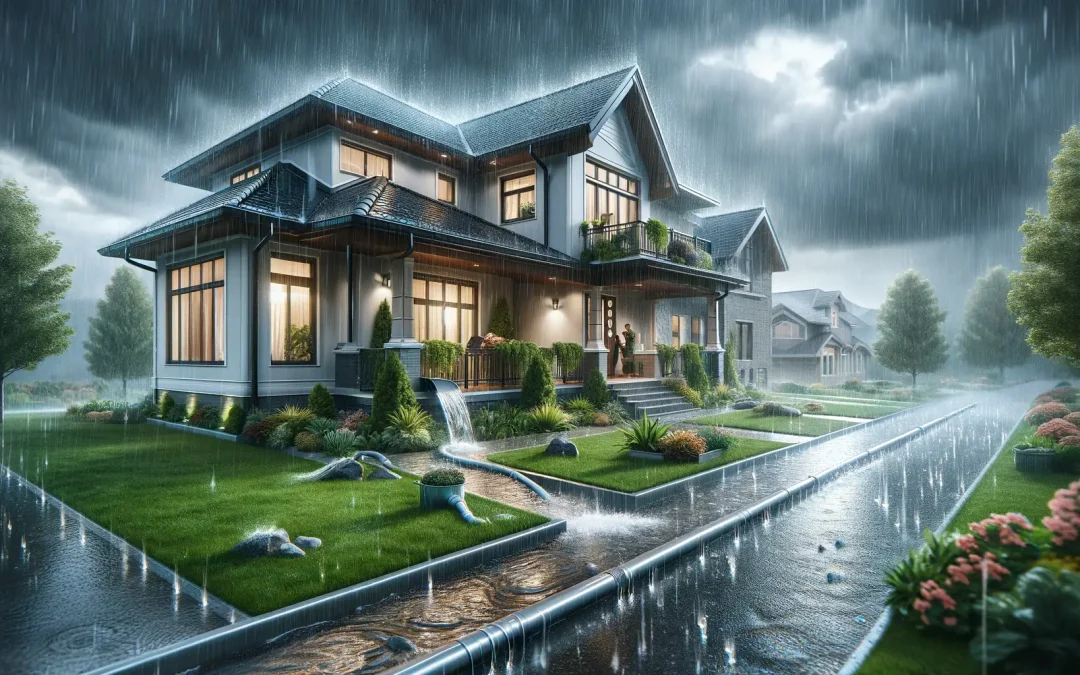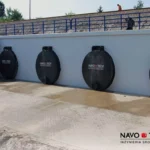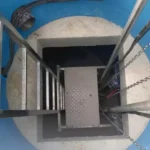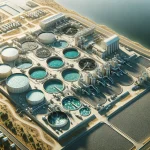In recent years, we have seen an increasingly frequent occurrence heavy rainfall, which may lead to flooding and significant property damage. Therefore, it is becoming increasingly important to ensure an effective water drainage system from buildings.
Examples of extreme weather events
In July 2017 in Germany, low atmospheric pressure brought several days of heavy rain, locally exceeding 300 liters per square meter. This resulted in flooding in several cities, causing millions of euros in damage.
In late October 2018, an extreme low pressure zone led to severe storms and heavy rainfall in Austria, Switzerland, Italy and other countries. Some regions experienced over 600 l/m2 of rain in a few days. Tornadoes caused enormous damage. A civil defense alert was declared in the Austrian state of Carinthia, with damage in Italy alone amounting to over €3 billion. At such extremes it often fails storm sewerage, whose performance becomes insufficient.
The importance of planning and selecting drainage systems in buildings
What does this mean for the planning and selection of drainage systems in buildings? How to effectively protect real estate against heavy rains?
One thing is for sure: If you want to protect your property from heavy rainfall and flooding, you should first take classic measures such as maximum sealing windows in the basement and ground floor. Additionally, you can use movable protection systems, such as sliding wall panels, to cover drains or entrances and prevent water from entering your home.
However, these measures are not sufficient, as waste water can enter the house in other ways during such weather events - namely through the drains of toilets, showers, sinks or washing machines located on a lower level, or through floor drains, for example in laundry rooms. This happens when the so-called backflow due to overloaded drains. Unfortunately, many buildings are not or insufficiently protected against backflow. Often for many years nothing happens. But then, extreme storms bring with them torrential rain, the sewage system exceeds its capacity, and rooms on lower levels are flooded by drainage systems. In most cases repair Such damage is difficult, expensive and rarely covered by insurance.
Backflow problem: When storm water shoots up from a toilet or basement
Reverse flow occurs when wastewater from a drain is pushed back into connected buildings. This happens when sewage cannot drain away fast enough. Sewer overload it can be caused, for example, by more and more buildings being built, which are then connected to the existing sewage system, without the sewage system being enlarged accordingly.
Of course, local governments are aware of this problem. However, it is unlikely to implement sewerage networks of sufficient dimensions to transport water from heavy rains without any backflow. When thousands of cubic meters of water fall with rain in a short time in a small area, sewers quickly exceed their capacity.
How to ensure effective protection against backflow
In order to keep the basement dry, even during heavy rains, the house must be protected not only from water entering from the outside, but also from sewage pushed back into the building. There are generally two options:
- Flood protection devices
- Lifting units
The use of flood protection devices is limited. They are simply mounted in the respective drain pipes. The principle of operation is that the return flap is like this lapel the end allows water to drain to the outside, but closes when backflow occurs.
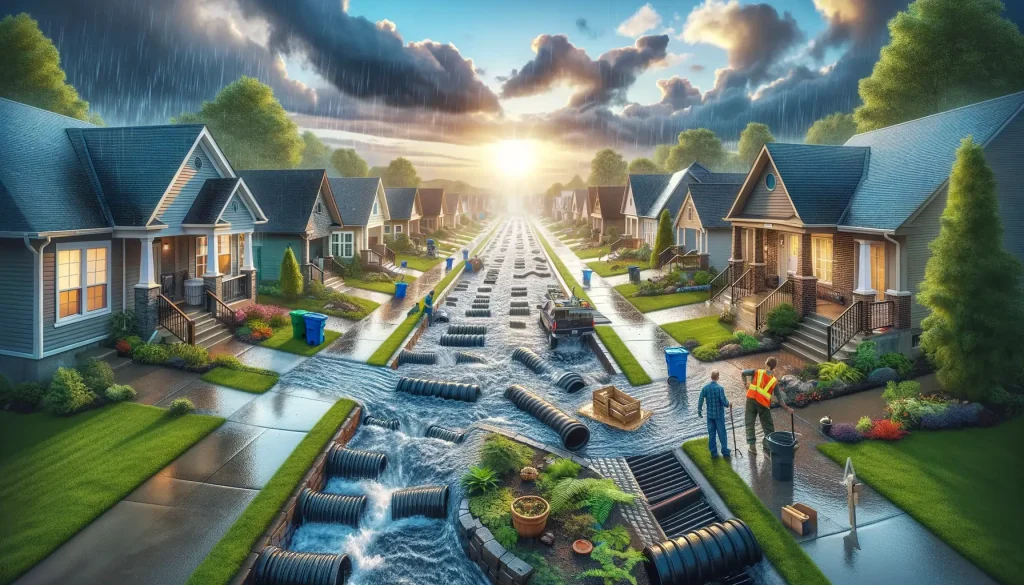
Unfortunately, flaps end caps do not provide full protection. Failures, insufficient maintenance, foreign objects, etc. can slow down the performance or even completely eliminate the protective function. Even with intensive maintenance, absolute safety against water ingress into the property cannot be ensured unless the latch of the flood protection device has been manually closed. Opening and closing the latch is cumbersome and easy to forget. Therefore, this solution is not very practical - especially since basinstoilets, etc. during this time cannot be used when the latch is closed.
Rainwater drainage depending on the type of roof shape
When designing roofs, special attention should be paid to drainage systems rainwater, which are key to ensuring the durability and functionality of the building. The solutions used depend on which ones roof shapes will be included in the building design.
| Roof type | Description | Tilt range (degrees) | Water drainage system |
|---|---|---|---|
| Flat Roof/Steel Deck | Minimal slope for water drainage | 0-5 | Internal drainage through roof drains, additional protection against water stagnation is recommended |
| Gable | Two sloping surfaces meeting at the top | 20-45 | Gutters and downpipes at both ends of the roof, possibility of using underground systems for water drainage |
| Hipped | Four surfaces inclined towards the center of the building | 25-45 | Gutters around the entire perimeter of the roof, downpipes strategically placed in the corners |
| Mansard | A combination of a flat roof and a gable roof | Lower part: 20-30, Upper part: 70-90 | Gutters at the lower edge of each slope and downpipes may be hidden in the structure |
| Tent | Four triangular walls forming a gable | 45-60 | Centrally placed gutter at the top, downpipes leading water to the sewage system |
| Envelope | Three or more slopes sloping to one point | 30-50 | Gutters placed on the outer edges, downpipes on the outside of the structure |
| Broken | Changing the slope angle in the middle of the height | Lower part: 30-45, Upper part: 45-60 | Gutters at every change of inclination angle, downpipes ensuring effective water drainage |
| Walmdach (hip roof) | Combination of a gable roof with two trapezoidal side walls | 22-27 | Gutters around the entire perimeter of the roof, downpipes in the corners ensuring even water drainage |
Lifting units: the only truly reliable protection against backflow
Backflow is inevitable in many cases. Only the sewage lifting unit with flood loop offers absolutely reliable protection against backflow, even in the event of a power failure. During normal operation, the lifting unit acting on the pump "lifts" the waste water above the so-called flood loop so that they can flow into the sewage system. When there is a backflow, no water can return home because the loop is above the flood level. If the sewage system is overloaded, water only pours out of the grates on the road.
To ensure continued protection, regular professional inspections and maintenance of the entire system are required: for lifting units in single-family houses once a year; for multi-family buildings twice a year, and for buildings used commercially four times a year.
Summary and Conclusions
During heavy rainfall, when large amounts of water fall into the sewer and exceed its capacity, backflow can occur: Water flows back into homes through drainage points, flooding rooms on lower levels if protection is not provided.
Author: M.Sc. Eng. Adam Głogowski

